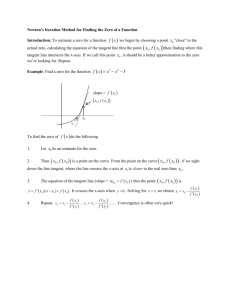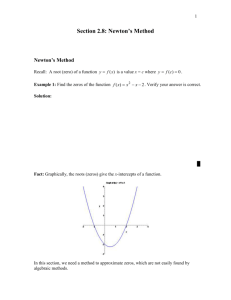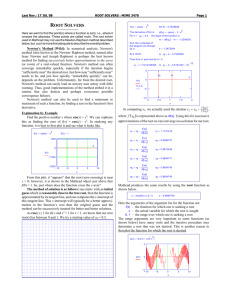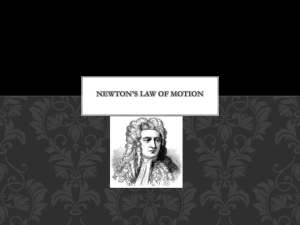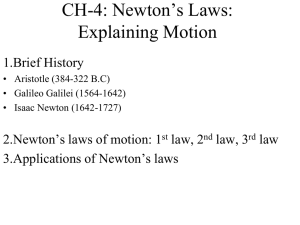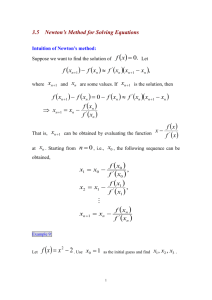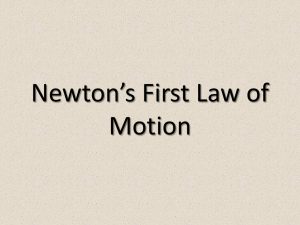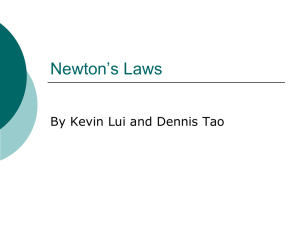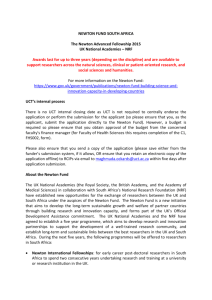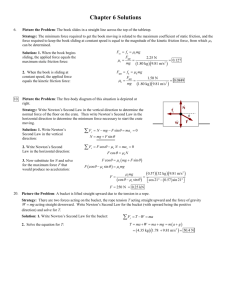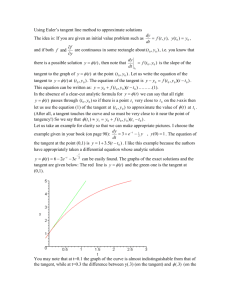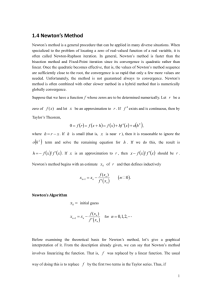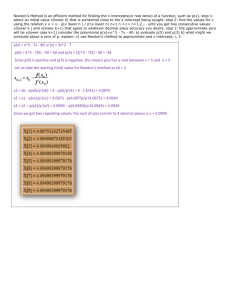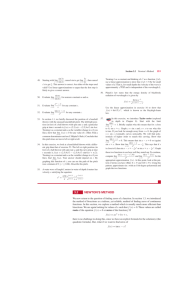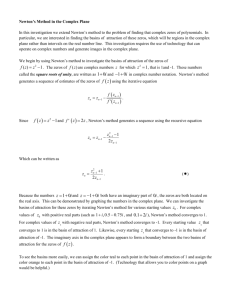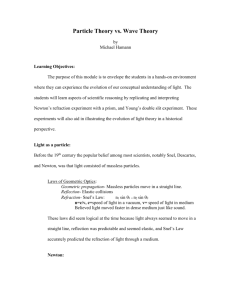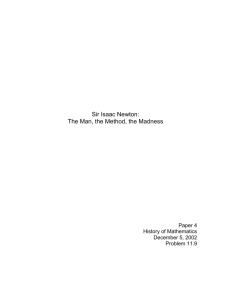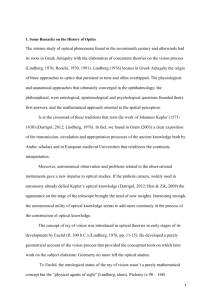Section 2.8
advertisement
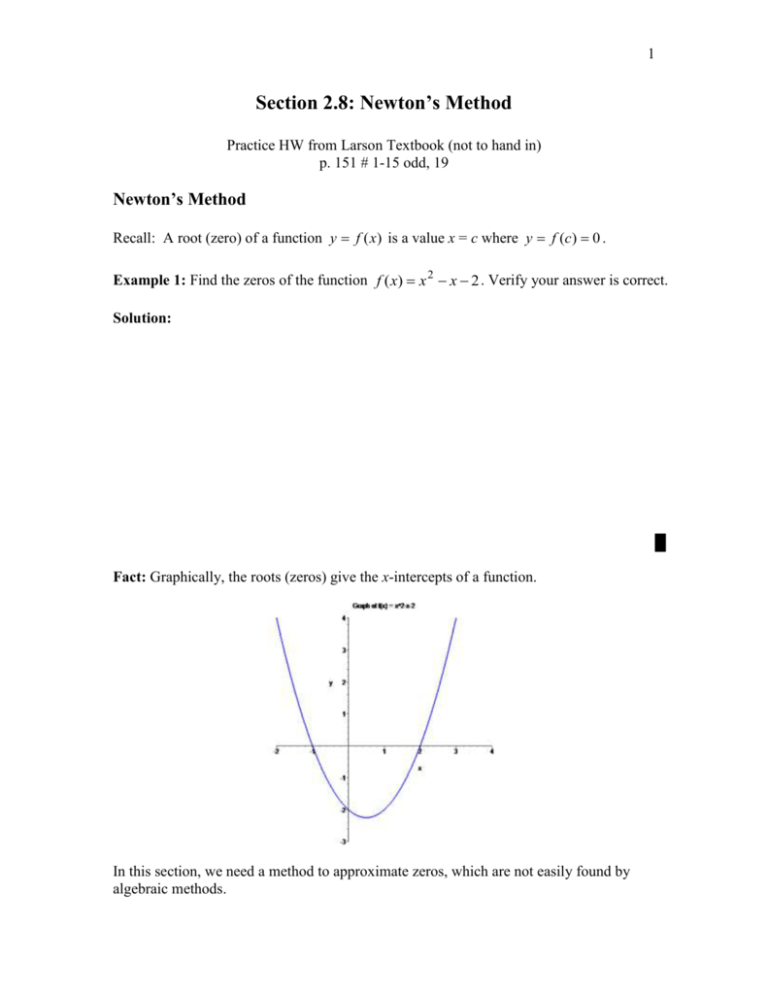
1 Section 2.8: Newton’s Method Practice HW from Larson Textbook (not to hand in) p. 151 # 1-15 odd, 19 Newton’s Method Recall: A root (zero) of a function y f (x) is a value x = c where y f (c) 0 . Example 1: Find the zeros of the function f ( x) x 2 x 2 . Verify your answer is correct. Solution: █ Fact: Graphically, the roots (zeros) give the x-intercepts of a function. In this section, we need a method to approximate zeros, which are not easily found by algebraic methods. 2 Suppose we want to find a root x = c of the following function y f (x) . We make a guess x1 which is “sufficiently” close to the solution. We use the point slope equation to find equation of the tangent line at the point ( x1 , f ( x1 )) . y y1 mtan ( x x1 ) y f ( x1) f ( x1)( x x1) y f ( x1 )( x x1 ) f ( x1 ) Consider the point where the graph of the tangent line intercepts the x axis, which we label as x x2 . The idea is the value of x2 is “closer” to the zero x = c than x1 . At x x2 , y = 0 and we have the point ( x2 ,0) . This gives the equation 0 f ( x1 )( x2 x1 ) f ( x1 ) 3 We solve this equation for x2 . f ( x1 )( x2 x1 ) f ( x1 ) x2 x1 x2 x1 f ( x1 ) f ( x1 ) f ( x1 ) f ( x1 ) We next find the equation of the tangent line to the graph of f (x) at the point ( x2 , f ( x2 )) . This gives y f ( x2 ) f ( x2 )( x x2 ) Suppose this tangent line intercepts the x axis at the point ( x3 ,0) . Using a similar process described above, we find that x 3 is given by x3 x 2 f ( x2 ) f ( x2 ) The value x x3 is even closer to the zero of x = c than x x2 . Generalizing this idea gives us the following algorithm. Newton’s Method (Newton Raphson Method) Given an initial value x1 that is sufficiently “close” to a zero x = c of a function f (x) . Then the following iterative calculation xn1 xn f ( xn ) f ( xn ) can be used to successively better approximate the zero x = c. Notes: 1. We usually generate iterations until two successive iterates agree to a specified number of decimal places. 2. Newton’s method generally converges to a zero in a small number (< 10) iterations. 3. Newton’s method may fail in certain instances. 4 Examples of Failure for Newton’s Method 1. Iterate produces a tangent line slope of zero. xn xn1 xn f ( xn ) undefined since f ( xn ) 0 f ( xn ) 2. Initial guess x1 not close enough 5 Example 2: Use Newton’s Method to approximate the zero)s of f ( x) x 5 x 1 Continue the process until two successive approximations differ by less than 0.001. Solution: 6 7 █ 8 Example 3: Use Newton’s Method to approximate the solution of the equation ( x 1) 3 sin x . Continue the process until two successive approximations differ by less than 0.001. Solution: > f := x -> (x-1)^3 - sin(x); f := x ® (x - 1)3 - sin(x) > plot(f(x), x = -3..3, view = [-3..3, -4..4]); 9 10
